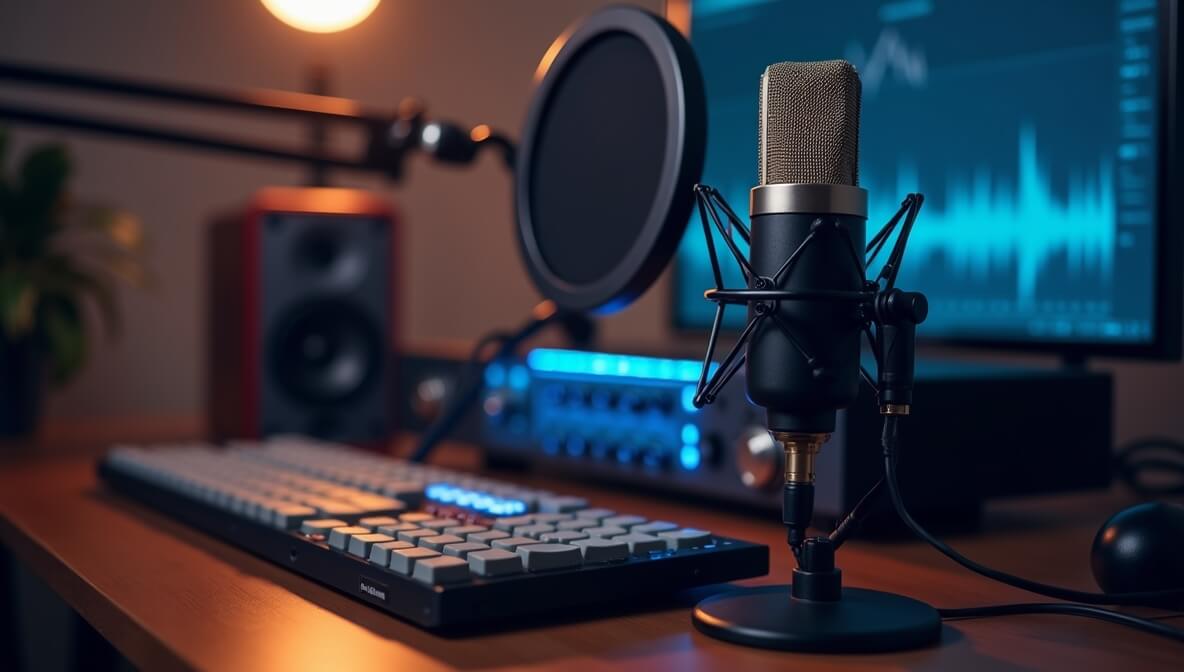August 08, 2025

Starting your home recording journey is an exciting and creative step, but it can also feel overwhelming when it comes to picking out the right equipment. Your microphone is one of the most important pieces of gear in the recording chain, and choosing the right one for your needs can make all the difference in the quality of your recordings. With so many different types, features, and price points, it’s easy to get lost in the options. In this guide, we’ll break down everything you need to know to make an informed decision and confidently purchase your first microphone.
Before diving into brands or specific models, it's important to know the types of microphones and what they’re best used for. Each type has its strengths and ideal applications:
Related Read: Microphones Explained — Dynamic vs. Condenser vs. Ribbon Mics
Your recording space plays a crucial role in how your microphone will perform. If your environment is acoustically untreated (i.e., you have lots of reflections, echoes, or background noise), a highly sensitive condenser mic could capture unwanted sounds, making your recordings sound muddy or inconsistent.
In an untreated room, a dynamic microphone might be a better choice as it’s less sensitive to the acoustics around it and will focus more on the sound source (like your voice or guitar) rather than the room itself.
If you plan to record in an untreated room, it’s a good idea to invest in acoustic treatment like foam panels, bass traps, or portable reflection filters to improve the sound quality of your recordings.
For more tips on creating an ideal recording space, check out: Building Your Home Studio — Essential Gear and Setup Guide.
Now that you understand the types of microphones, think about what you’ll be recording most often. Different mics are suited for different uses:
As a beginner, you don’t need to break the bank to get a solid microphone. There are plenty of affordable microphones that offer great sound quality without costing a fortune. Here’s how to think about your budget:
Remember that your first mic is just a starting point. You can always upgrade later as your recording skills and needs evolve. Also, don’t forget to factor in the cost of accessories (mic stands, pop filters, shock mounts, etc.).
A microphone is just one part of your home recording setup. To ensure the best results and protect your equipment, you’ll also need:
Whenever possible, it’s a good idea to test microphones before purchasing them. The way a mic reacts to your voice or instrument can be surprisingly different from what you expect. The frequency response, the level of detail, and how it handles various recording environments can all vary greatly.
If in-person testing isn’t feasible, research user reviews and listen to demo recordings online to get a sense of how the mic sounds in real-world scenarios.
Choosing your first microphone is about balancing your recording goals, environment, and budget. Start with a microphone that fits your most common recording tasks — whether it’s vocals, instruments, or podcasts — and make sure you have the right accessories to support it. Don’t forget to consider the acoustics of your recording space, as this can have a significant impact on your final recordings.
As you gain more experience and your recording skills grow, you can always expand your microphone collection. But your first mic will be your gateway to high-quality home recording, and with the right choices, you’ll be set up for success.
Stay up to date with the latest tips, expert insights, product reviews, and step-by-step guides to help you grow, create, and succeed—no matter your industry or passion.